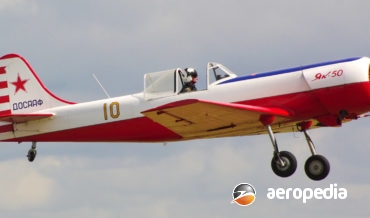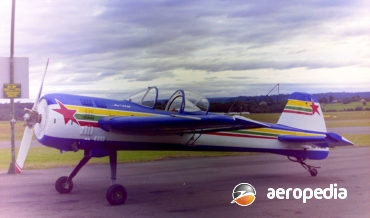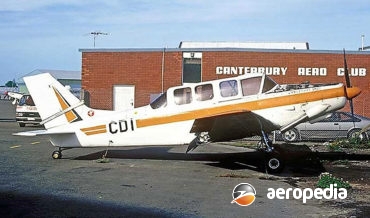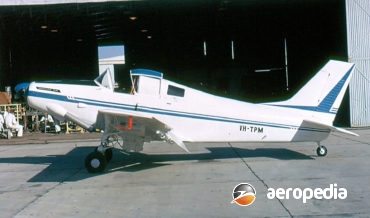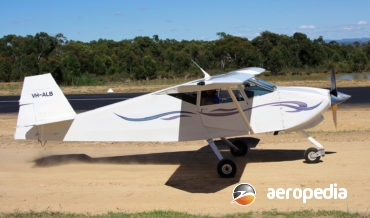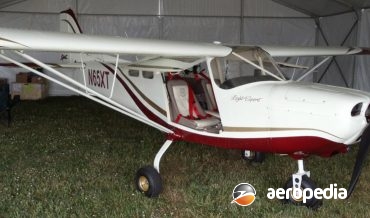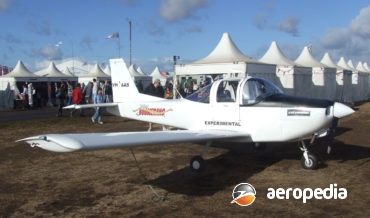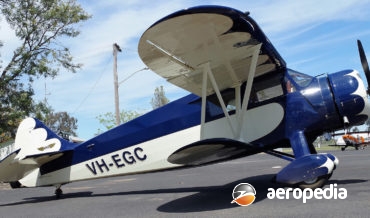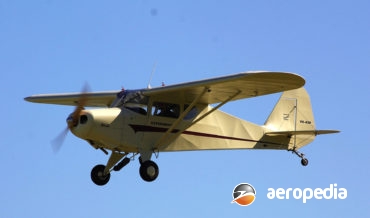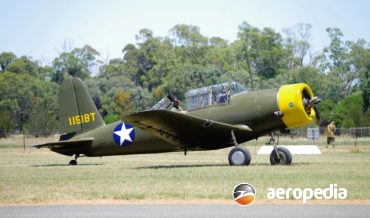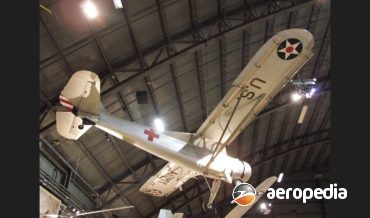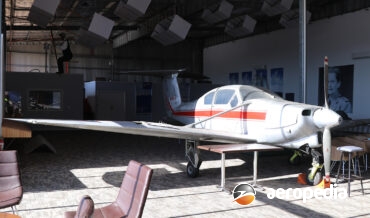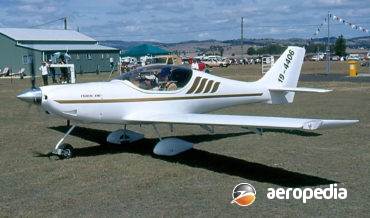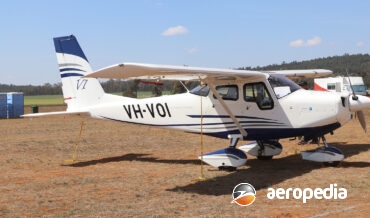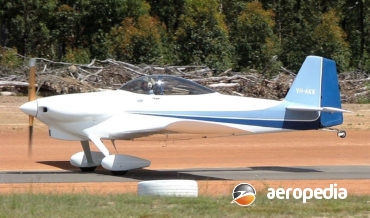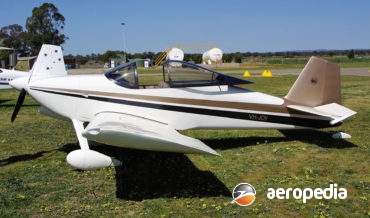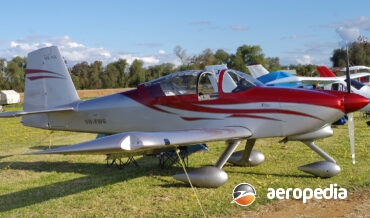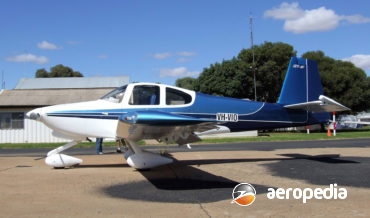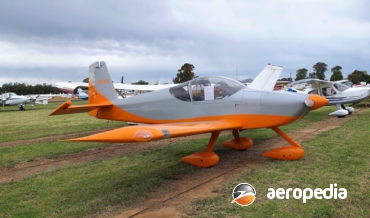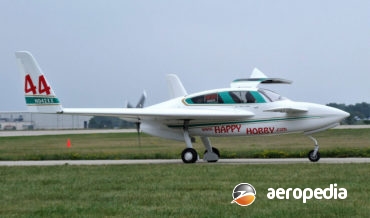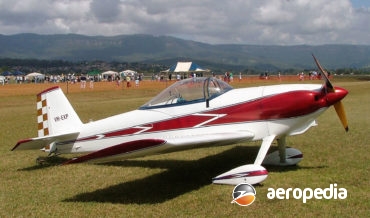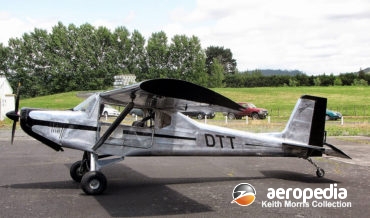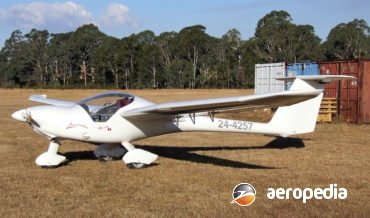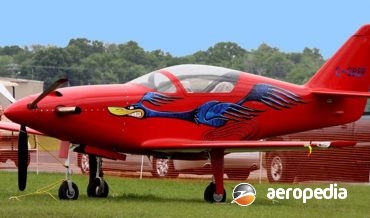All Contents
Contents
In 1937 Alexander Sergeivich Yakovlev designed the Ya-10, an open cockpit two-seat training aircraft with a 90-kw (120-hp) Renault engine.
David C. Eyre
- May 8, 2019
Since the availability of aircraft from the Eastern Block in the late 1970s some hundreds of Soviet designed aircraft have become available to western pilots.
David C. Eyre
- May 8, 2019
The Yak-55 series was an all-metal cantilever monoplane designed for high performance aerobatics and was first seen at Spitzberg, Austria in 1982 at the World Aerobatic Championships when flown by Yakovlev Bureau test pilot Michael Molchaniuk.
David C. Eyre
- May 8, 2019
The one and only example of the Yeoman Hanes 250 aircraft was built initially at Bankstown by Yeoman Aviation as a single-seat agricultural monoplane, a Model 250R Cropmaster, and was registered as VH-DEQ (c/n 110) on 28 January 1964 to the manufacturers for testing.
David C. Eyre
- May 8, 2019
Yeoman Aviation Pty Ltd of Bankstown, NSW, was formed in 1958 as an associate company of Kingsford Smith Aviation Services Pty Ltd to specialise in the development and servicing of agricultural aircraft.
David C. Eyre
- May 8, 2019
Steve Wittman, a well-known American racing pilot since the 1920s, designed a number of racing aircraft and, due to the popularity of his designs, several designs were made available for amateur construction.
David C. Eyre
- May 8, 2019
The spirit was designed by Mr.Max Tedesco and is built by a joint American and Colombian company, the World Aircraft Company, for the light sport aircraft market and was shown for the first time to the public at AirVenture at Oshkosh in 2011.
David C. Eyre
- May 8, 2019
The Wren 460 was a short take-off and landing conversion of the Cessna 182 using an ultra-low–speed control system devised by James L Robertson.
David C. Eyre
- May 8, 2019
In early 2017 Morgan Aeroworks of Taree, NSW stopped production of its range of aircraft, comprising the Sierra and Cougar light sport aircraft, the owner of the Company, Gary Morgan, moving back to New Zealand.
David C. Eyre
- May 8, 2019
The Boomerang was designed by Mr William “Bill” Whitney as a two-seat, all-metal, light training monoplane in 2003/04 to replace the many Cessna 152s and Piper Tomahawk in use around Australia with various training organisations.
David C. Eyre
- May 8, 2019
Mr Geoffrey Williams, before his death in May 2002, designed five ultra-light (microlight aircraft in New Zealand) of his own design and built four. He was the son of a former World War II Avro Lancaster pilot and lived in the Dunedin area. His grandfather was a carpenter and Geoff
David C. Eyre
- May 8, 2019
The Waco series of touring biplanes was first released in 1931 by the Weaver Aircraft Co (WACO).
David C. Eyre
- May 8, 2019
The Wag Aero Cuby is a redesign of the well known Piper Cub by the Wag-Aero group of Lyons, Wisconsin, using modern construction methods and materials, being aimed at the home-built market.
David C. Eyre
- May 8, 2019
The Sportsman is a light sporting aircraft produced in kit form by the Wag Aero Group at Lyons in Wisconsin.
David C. Eyre
- May 8, 2019
The Wag-A-Bond Traveller is a replica of the Piper PA-15 Vagabond series but much improved, with extra strength, comfort and performance, using modern construction methods and materials, and in recent years has been made available to amateur constructors in kit form by the manufacturers, Wag-Aero Group of Lyons, Wisconsin, USA.
David C. Eyre
- May 8, 2019
The Magpie was a light aircraft built by W F Watkins at Cootamundra.
David C. Eyre
- May 8, 2019
The 620A is an agricultural aircraft produced by the Weatherly Aviation Co of Lincoln, California, and is one in a series of aircraft produced in small volume by the company for this role.
David C. Eyre
- May 8, 2019
In 1938 the US Army tested a private venture training aircraft built by the Vultee Corporation and known as the V-54. The prototype (NX21753) first flew in June that year with a 336-kw (450-hp) Wright Whirlwind engine.
David C. Eyre
- May 8, 2019
In 1940, in response to a US Army requirement for a two-seat unarmed light observation aircraft, Stinson produced the Model 74 and three examples were produced as the YO-49 and evaluated against the Bellanca YO-50 and the Ryan YO-51.
David C. Eyre
- May 8, 2019
The Aircruiser was a low-wing, fixed tricycle-undercarriage, four-seat aircraft of light alloy all-metal construction designed by Henry Millicer.
David C. Eyre
- May 8, 2019
The Victa R-2 was a four-seat light monoplane designed for Victa Ltd by Mr Luigi Pellarini, designer of the Transavia Airtruk and a number of other aircraft.
David C. Eyre
- May 8, 2019
The VM-1 Esqual is a two-seat monoplane with fixed tricycle undercarriage high-performance light aircraft produced by Vol Mediterrani in a facility at Moia near Barcelona in Spain.
David C. Eyre
- May 8, 2019
The prototype of this new generation of touring and training aircraft was flown by Paul Southwick, an AOPA test pilot, at the company’s facility in Naples, this aircraft being registered I-PDVA.
David C. Eyre
- May 8, 2019
The RV-4 is a development of the single-seat RV-3 and was also designed by Richard Van Grunsven of Oregon, USA.
David C. Eyre
- May 8, 2019
The Vans RV-6 s a development of the RV-3 and RV-4 series designed by Richard Van Grunsven, and produced by Van’s Aircraft of North Plains, Oregon, the prototype of the RV-6 (N66RV) flying for the first time in June 1986.
David C. Eyre
- May 8, 2019
The Vans RV-8 is another homebuilt produced by Van’s Aircraft Inc of North Plains, Oregon, and, like some other models, is produced in two versions, the RV-8 with a tailwheel undercarriage, and the RV-8A with a tricycle undercarriage.
David C. Eyre
- May 8, 2019
One of the range of very successful light homebuilt monoplanes produced by Vans at Oregon in the United States, the prototype of the series, the RV-9A (N96VA) with a tricycle undercarriage was first flown in 1997.
David C. Eyre
- May 8, 2019
The RV-10 series was the first foray by Richard Vans Grunsven of Vans aircraft into the manufacture of a kit for a four-seat aircraft, and the prototype (N410RV) was flown for the first time on 29 May 2003.
David C. Eyre
- May 8, 2019
The Vans RV-14 and RV-14A series was introduced to the sporting aviation market in 2012 and although similar in appearance to other aircraft in the series, is better described as a two-seat variant of the RV-10 series and is capable of some aerobatics.
David C. Eyre
- May 8, 2019
The Velocity is marketed in kit form by Velocity Aircraft of Sebastian, Florida, as a high-performance touring aircraft seating four.
David C. Eyre
- May 8, 2019
The Vans RV-3 is a single-seat sporting monoplane designed by Richard Van Grunsven in the USA in 1968.
David C. Eyre
- May 8, 2019
The WT-01 and WT-02 Klassik aircraft, known as the Wild Thing were introduced to the light aircraft market in 1997 by ULBI (Ultr-Leight-Bau International GmbH at Hafurt) in Germany as a two-seat light sporting aircraft, being a strutted, high-wing aircraft, the basic variation in the two models being the installation
David C. Eyre
- May 8, 2019
The Pelican series of light aircraft is marketed by Ultravia Aero Inc at Mascouche, Quebec, Canada, as a homebuilt two-seat touring aircraft supplied in kit form for the amateur builder.
David C. Eyre
- May 8, 2019
The Super Pelican was designed by Jean Rene Le Page in Quebec, Canada and was a development of the smaller and earlier Le Pelican which was also an ultralight aircraft and was fitted with a half-conversion of a Volkswagen engine reduced from four cylinders to two.
David C. Eyre
- May 8, 2019
The Lambada is one of a series of ultra-light aircraft produced in the Czech Republic by Urbanair at Libchavy, being designed by Pavel Urban, Karel Faltus and Milos Mladek.
David C. Eyre
- May 8, 2019
To meet customer requirement, Transavia continued with further development of the basic Airtruk, and this led to the Model T-320 Airtruk fitted with the Rolls Royce/Continental Tiara 6-320-2B engine producing 239-kw (320-hp).
David C. Eyre
- May 8, 2019
For some years after World War II the Transland Aircraft Company of Torrance, California, a division of Hi Shear Rivet Tool Co, converted surplus World War II aircraft, particularly trainers, for the crop-dusting role.
David C. Eyre
- May 8, 2019
Designed by Richard Trickle and Vance Jaqua and first flown in 1991, the KIS is a two-seat all-composite amateur-built aircraft sold in kit form, the name KIS being an abbreviation of “keep it simple”.
David C. Eyre
- May 8, 2019
The TR-4 Cruiser is a development of the TR-1 and TR-2 Kis produced by Tri-R Technologies Inc of Oxnard California which is produced in kit form for the amateur constructor and may be fitted with a variety of engines.
David C. Eyre
- May 8, 2019
In the 1990s Performance Aircraft designed the Legend as a high performance sport aircraft for amateur construction but the Company was later acquired by Legend Aircraft of Winnsboro of Lousiana.
David C. Eyre
- May 8, 2019
Recent Comments
Archives
Categories
- No categories
Categories
- No categories
Latest Posts
Newsletter

